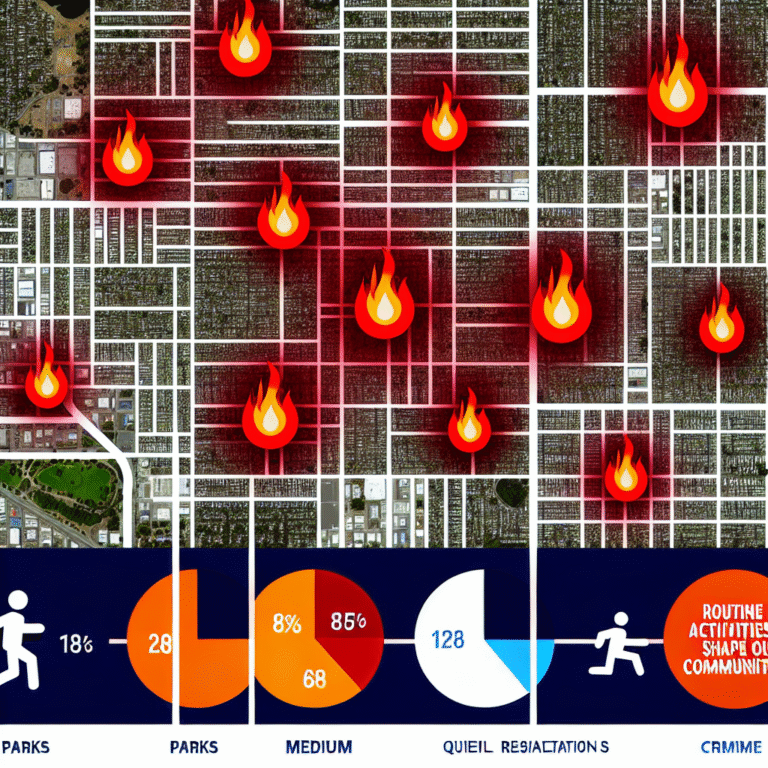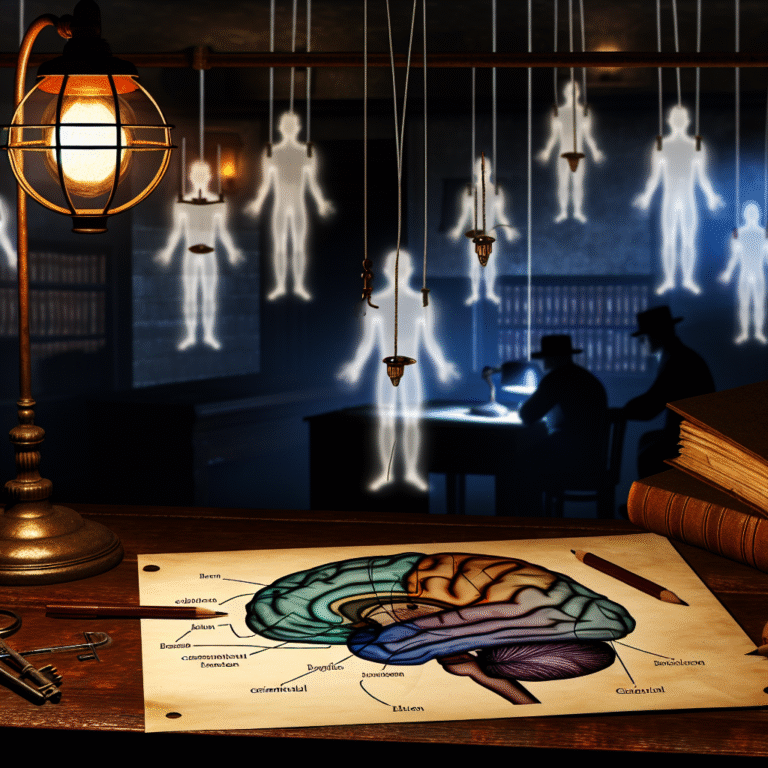
Introduction
In the world of criminal justice, the allure of criminal profiling often captures the imagination. We often think of iconic characters from television shows who can seemingly deduce everything about a criminal from a single glance at their crime scene. The idea that "The Profile Predicts: Is Criminal Profiling an Exact Science?" invites scrutiny into a practice that oscillates between the art of deduction and the rigor of scientific inquiry. As homicides, serial offenses, and cybercrimes continue to rise, understanding the nuances of criminal profiling gains more importance than ever. Despite its widespread portrayal as a flawless tool, this practice remains shrouded in ambiguity and debate.
In this article, we delve deeply into the intricacies of criminal profiling, exploring both its methodologies and its limitations. Through engaging case studies, expert insights, and a thorough analysis of existing theories, we will uncover whether the profile truly predicts criminal behavior or if it is simply a highly educated guess.
What Is Criminal Profiling?
Criminal profiling, often referred to as criminal investigative analysis, aims to identify the characteristics of an unknown offender based on their crimes. By analyzing crime scenes, victimology, and behavioral patterns, professionals aim to create profiles that can assist law enforcement in apprehending suspects. The process combines psychology, sociology, and forensic science, making it an essential yet complex part of criminal investigations.
Historical Context
The history of criminal profiling can be traced back to the early 19th century, with the pioneering work of Italian criminologist Cesare Lombroso, who argued that certain physical characteristics could indicate criminality. However, modern profiling has evolved significantly. The FBI’s Behavioral Science Unit, established in the late 1970s, played a pivotal role in developing profiling techniques that are still in use today.
Types of Criminal Profiling
- Geographic Profiling: This method identifies the likely geographic area where an offender may reside based on the locations of their crimes.
- Psychological Profiling: This focuses on the mental state, motivations, and personality traits of the criminal.
- Crime Scene Analysis: Investigators analyze the crime scene to infer behavioral characteristics and potential motives.
The Science Behind Criminal Profiling
Psychological and Behavioral Foundations
The central premise of criminal profiling relies on psychology. Understanding human behavior—particularly criminal behavior—requires a foundation in psychological theories and models. Many profilers refer to the work of psychologists like Sigmund Freud, who explored the unconscious mind’s influence on behaviors.
Empirical Studies and Limitations
While profiling has proven helpful in certain investigations, studies have highlighted its limitations. A comprehensive analysis conducted by the FBI found that criminal profiling has a low predictive success rate. For instance, a notable study published in the Journal of Forensic Sciences indicated that only about 50% of profilers’ predictions were accurate.
| Study | Findings | Implications |
|---|---|---|
| FBI Study (2009) | 50% accuracy in predictions | Highlights the need for caution in using profiles |
| Research on Serial Killers | Profiles not as distinct as believed | Suggests overlap among different offenders |
Case Studies: Real-World Applications
The BTK Killer
One prominent case involves the BTK Killer, Dennis Rader, who evaded capture for decades. Profilers struggled to create an accurate profile of Rader because he did not fit typical serial killer molds. This case highlights the inherent limitation in predictability—demonstrating that criminal behavior is often multifaceted and defies easy categorization.
Analysis: Rader’s case exemplifies the pitfalls of profiling when aggressors do not conform to established psychological profiles, reinforcing the idea that "The Profile Predicts: Is Criminal Profiling an Exact Science?" may often lead to misdirection.
The Unabomber
Ted Kaczynski, known as the Unabomber, was another challenge for profilers. The FBI’s profiling team used behavioral analysis, but the key to his capture was a linguistic analysis of his manifesto. This situation raised questions about the effectiveness of behavioral profiling alone.
Analysis: The Unabomber case underscores a critical lesson: Criminal profiling must not solely rely on behavioral predictions; it needs to be supplemented with comprehensive investigative techniques.
The Golden State Killer
The recent apprehension of the Golden State Killer via genealogy databases revolutionized investigative methods. While profiling played a role in narrowing down the search parameters, it was ultimately genetic evidence that led to the arrest.
Analysis: This case serves as a reminder that while profiling can guide investigations, it is not an exact science nor a standalone solution. Collaborative methods often yield the best results.
The Role of Technology and Data Analytics
Advances in Technology
The advent of technology has drastically reshaped criminal profiling. Data analytics, machine learning, and AI tools now analyze vast amounts of data far more efficiently than traditional methods.
The Future of Profiling
Emerging technologies offer promising advancements. Machine learning algorithms can identify patterns and correlations in criminal behavior more reliably than human profiling alone. However, these technologies still require human oversight to interpret the data meaningfully.
The Ethical Dimensions of Criminal Profiling
Bias and Misrepresentation
One of the critical ethical concerns in criminal profiling is the potential for bias. Profilers’ assumptions may inadvertently lead to stereotyping certain demographics as more prone to criminality.
Legal Implications
Misguided profiling can result in wrongful arrests and a tarnished judicial process. Courts have increasingly scrutinized profiling practices, demanding greater transparency and accountability.
Conclusion
The question "The Profile Predicts: Is Criminal Profiling an Exact Science?" is multifaceted and complex. While criminal profiling can offer valuable insights into criminal behavior and assist in investigations, it is far from a precise science. It blends artistic intuition with empirical methodologies, and its predictions can sometimes mislead investigators down unproductive paths.
As advancements in technology continue to shape the future of investigative techniques, it is crucial to balance these tools with ethical considerations and human judgment. Profiling remains an essential component of criminal investigations, but it must act as a guide rather than a definitive answer.
The journey toward understanding the intricacies of criminal behavior and successfully predicting it remains ongoing. Engaging with this complex topic invites law enforcement and the public to constantly reevaluate the tools at their disposal in the quest for justice.
FAQs
1. What is the primary goal of criminal profiling?
Criminal profiling aims to identify the characteristics, motives, and potential behaviors of an unknown offender based on their crimes.
2. Is criminal profiling always accurate?
No, studies suggest that criminal profiling has a 50% accuracy rate and should be viewed as a tool rather than a conclusive solution.
3. How do technology and data analytics impact profiling?
Technology enhances profiling by analyzing large datasets and identifying patterns that may not be immediately apparent to human profilers.
4. Can profiling lead to wrongful arrests?
Yes, biased or misguided profiling may lead to stereotypes that cause wrongful arrests, raising ethical concerns in law enforcement.
5. What skills are necessary for a criminal profiler?
Essential skills include critical thinking, psychological knowledge, research proficiency, and a thorough understanding of criminal behavior patterns.
By delving into the depths of criminal profiling, we open up discussions on its merits, limitations, and the importance of continuous evolution within the field—a reminder that the profile predicts, but it does not dictate.

















